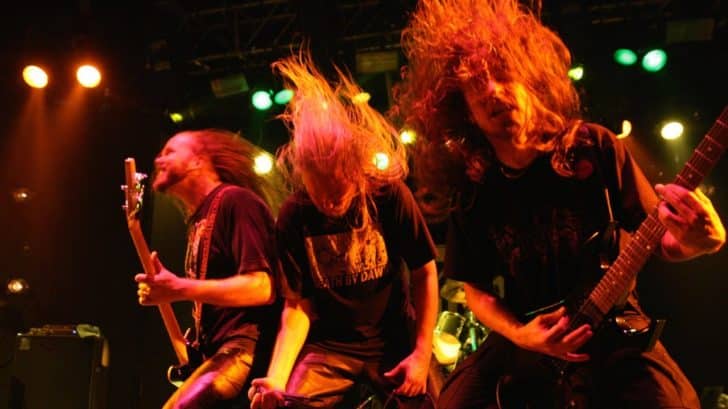When the music hits you just right, you find yourself swaying to the rhythm, your head bobbing in time with the beat. This visceral response is universally recognized as headbanging, a practice deeply intertwined with the rock ‘n’ roll era. But where did this iconic move originate, and who can be credited with popularizing it? Let’s delve into the fascinating history of headbanging.
Ancient Origins: The Rhythmic Traditions
While headbanging is often associated with the thunderous sounds of heavy metal, its roots stretch back centuries before the emergence of rock music. Surprisingly, this rhythmic practice can be traced to Islamic devotional music, specifically within the Sufi tradition. The mesmerizing dance moves of dervishes in Iran’s Kurdistan Province and the Qawwali tradition, dating back 600 years, involved intricate head movements, symbolizing reverence for Allah and Sufi saints.
The Rock Era: A Battle of Claims
The birth of headbanging in the rock era is shrouded in mystery, with no single individual claiming its invention. Some argue it began with fans, expressing their raw emotions during electrifying performances. Others point to influential artists who unknowingly set the stage for this iconic movement.
The Pioneering Artists: Black Sabbath and Led Zeppelin
In the early 1970s, two iconic bands, Black Sabbath and Led Zeppelin, emerged as frontrunners in the headbanging scene. Black Sabbath’s electrifying performance of “War Pigs” in 1970 showcased Ozzy Osbourne’s uninhibited head movements, capturing the essence of headbanging. Led Zeppelin’s 1969 tour, particularly their show at the Boston Tea Party, witnessed audience members passionately headbanging to the music, potentially popularizing the term “headbanger.”
Earlier Instances: Pre-1970 Headbanging
Digging deeper into history, instances of early headbanging emerge. Psychedelic rock band Blue Cheer, in 1968, showcased drummer Paul Whaley subtly headbanging during their performance on American Bandstand. Cream’s 1968 farewell concert captured fans headbanging to the riff-heavy “Sunshine of Your Love.” Even in the 1950s, Jerry Lee Lewis’ energetic stage presence led fans to unknowingly headbang along to his music.
The Popularizers: Angus Young and Dee Snider
As heavy music permeated mainstream culture, notable figures emerged as ambassadors of headbanging. AC/DC’s Angus Young, with his iconic schoolboy outfit, became synonymous with headbanging during live performances. Twisted Sister’s Dee Snider claimed to unintentionally pioneer headbanging, using the motion to clear his face of hair during shows. Lemmy of Motorhead and Deep Purple’s Ian Gillan were also associated with the practice, marking headbanging’s integration into the rock ethos.
I did. But it wasn't intentional. I would throw my head forward, my hair would cover my face, so I'd throw my head back to get it out of the way. I believe it was the fanzine Kick Ass Monthly in '78 that said Angus Young and I were the first. I just hated all that hair in my face https://t.co/ryTxddOsFv
— Dee Snider🇺🇸🎤 (@deesnider) March 18, 2022
A Word of Caution: Headbanging Safety
While headbanging is exhilarating, it comes with risks. Numerous musicians have faced health issues due to excessive headbanging, including neck pain and muscle tension. Studies have shown that this energetic movement can cause minor brain damage when done excessively. Artists like Paramore’s Hayley Williams and Megadeth’s Dave Mustaine have openly discussed the physical toll of headbanging.
In conclusion, headbanging’s origins are as diverse as the music that inspired it. From ancient Sufi traditions to the electrifying performances of rock legends, this rhythmic expression has become a cherished element of music culture. As fans continue to embrace headbanging, it’s crucial to balance enthusiasm with caution, ensuring that the joy of the music is celebrated without compromising one’s well-being. So, next time you find yourself caught in the music’s grip, headbang responsibly, honoring the legacy of this iconic movement.

